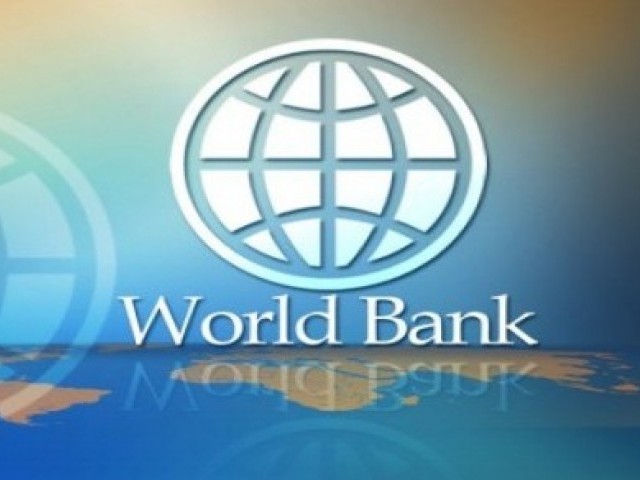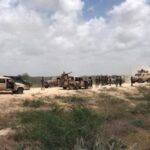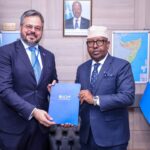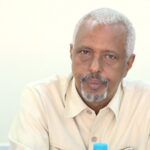NAIROBI, Kenya – The World Bank has revised downwards the economic growth forecast for Somalia in 2023 to 2.8 percent, from an earlier prediction of 3.6 percent.
The Bank says in its latest (eighth) edition of Somalia Economic Update that the country is still vulnerable to shocks from over-reliance on external trade and financing, limited economic diversification, and susceptibility to natural disasters.
“The World Bank projects that the economy will record a modest growth of 2.8 percent in 2023. The projected growth in 2023 has been revised downward by 0.8 percentage points compared to the 2022 Somalia Economic Update (World Bank 2022).”
The economy is projected to pick up over the medium term as economic activities gain momentum, with growth expected to increase gradually to 3.7 percent and 3.9 percent in 2024 and 2025, respectively.
However, the recovery is still expected to be tempered by the legacy of past shocks, including the drought, disruption of grain supplies from Ukraine, and the global pandemic. These shocks have worsened poverty and triggered the cost-of-living surges.
According to the Bank, recurrent climate-related shocks, such as cycles of drought, floods, locust infestation, higher international commodity prices, as well as increased insecurity and conflict, have interrupted the country’s growth trajectory.
Ending the isolation
However, this has not affected the country’s commitment to continue advancing reforms to strengthen key economic institutions and promote macroeconomic stability and recovery.
The Bank acknowledges Somalia’s continued progress toward meeting the conditions for achieving the High Indebted Poor Countries (HIPC) Completion Point in December 2023.
Somalia was on November 23, admitted into the East African Community (EAC) after several decades of civil war, violent extremism, and isolation, becoming the eighth member of the regional economic bloc.
The admission ushers in a new era for Somalia to reconstruct its broken ties with its regional and global partners.
Negotiations culminating in the admission of Somalia to the EAC started in August this year in Nairobi.
According to the EAC Secretariat, Somalia’s inclusion brings over 3,000km of coastline – the longest in Africa – giving access to the Arabian Peninsula and boosting trade when EAC member states tap into Somalia’s blue economy resources such as abundant fish (tuna).
On the other hand, Somalia is expected to benefit from the EAC’s road, rail, and energy networks, in addition to enhanced trade with its regional peers.
The World Bank notes that as Somalia reaches the HIPC Completion Point, it is important that the country continues its reform path to achieve inclusive economic growth and prosperity to avoid sinking into future debt in the medium-term and post-HIPC era.
“Over the medium term, peace dividends and unlocked concessional borrowing after debt relief will boost output growth,” the bank says.
Somalia has remained on a strong economic reform path despite the various global and exogenous shocks that have continued to buffet the economy.
Somalia’s economic growth slowed significantly in 2022 as surging inflation and weaker external demand weighed on global activity, with tighter global financial conditions and a pronounced rise in global inflation holding back private consumption and investment.
Source: The EastAfrican






